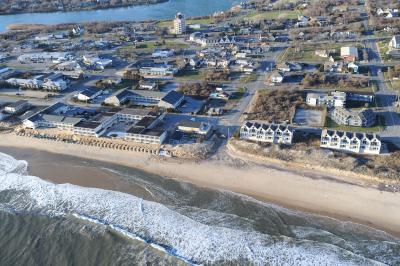No Playing Possum for This Guy
No Playing Possum for This Guy

Getting stuck between the spindles of a wooden gate in Sag Harbor Village on Friday may have been a blessing in disguise for a male opossum, which was spotted by a passer-by and rescued. The animal had obviously been trudging through several feet of snow despite the extreme cold and windchill.
James J. Froehlich phoned village police when he noticed the rat-like creature wedged in a Madison Street gate at around 11:30 a.m. Police called the Evelyn Alexander Wildlife Rescue Center in Hampton Bays, which sent out Penny Moser, a volunteer who lives in the Mount Misery neighborhood of Sag Harbor. Ms. Moser said the opossum was an adult male and already “terribly hypothermic” when she reached it.
“In the 12 years I’ve been doing it, it was one of the saddest predicaments I have seen an animal in. He was dying,” Ms. Moser said. Though lethargic, the opossum perked up a bit when she used gloved hands to push his body back and forth, hoping to free him without having to break the gate. It started to wriggle, and then, with her help, broke free. She scooped up the opossum, which she described as very docile, and drove it to the Hampton Bays center.
It was fortunate that the opossum was found, she said, because as southern animals that moved north in the last 100 years they are highly susceptible to frostbite. They don’t usually wander about in extremely cold weather, Ms. Moser said, surmising that the opossum must have been startled by something that caused it to leave its den. “I’m so grateful to that person who called,” she said.
At 7 pounds 10 ounces, the opossum is 18 inches long from nose to derriere, but 28 inches long if you include its tail. Ms. Moser said it was the biggest opossum she had ever seen, explaining that they tend to live only two or three years, and keep growing until they die. The rescued opossum is reasonably old because of its size and weight, she said, although they can weigh several pounds more in the summer.
Veterinarians at the wildlife center, which can be reached for rescues at 728-WILD, are treating the opossum for lice and mites. Once the weather improves, it will be released back into the wild. For now, Ms. Moser said, the opossum will enjoy the rest of the winter out of the cold.
“It was kind of a good move on his part,” she said.





